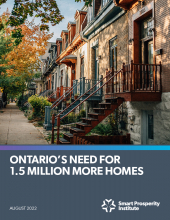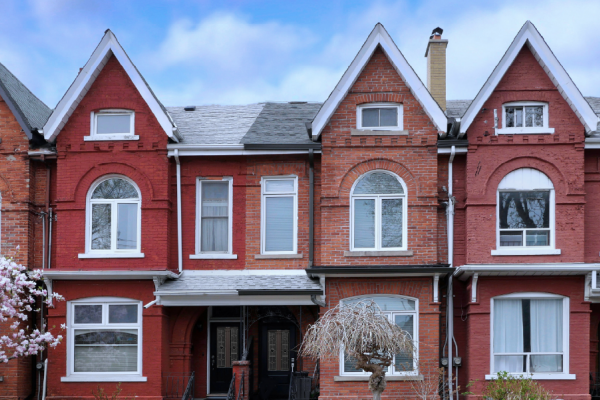In early 2022, Ontario’s Housing Affordability Task Force released a series of 55 recommendations aimed at increasing the attainability of homes, for both rent and sale, across the province. Their very first recommendation, “[s]et a goal of building 1.5 million new homes in ten years” caught the eyes of policymakers, the media, and the general public.
During the 2022 election campaign, all four major provincial parties committed to this goal, including the re-elected Progressive Conservative government.
Ontarians have three different reports outlining housing needs over the next decade, with three different results. Given the lack of details provided in the Task Force report, and a wide range of housing demand estimates between the three reports, it is reasonable to approach a 1.5 million new home target with a high degree of skepticism.
Our goal in this report is to provide the analysis needed to test if this is a reasonable target. Specifically, this report seeks to answer two questions:
1. Is 1.5 million new homes a reasonable forecast of Ontario’s housing needs over the next decade?
2. If so, how will the demand for 1.5 million new homes be distributed across the province?
The answer to the first question is an unequivocal ‘yes’. Using a methodology adapted from Baby Needs a New Home that better accounts for pre-existing housing shortages, and population forecasts from the Ontario Ministry of Finance, we estimate the demand for 1.51 million net new homes over the next decade. We obtain this figure through the creation of a “Rest of Canada Average” (RoCA) benchmark, which is the average housing supply levels in Canada, in the year 2016, outside of the two provinces with chronic housing shortages, Ontario and British Columbia, adjusted for both population size and age. The paper estimates the number of net new houses it would take for each of Ontario’s 49 Census Divisions to reach the RoCA benchmark by the year 2031. We find that under the RoCA benchmark, Ontario had a pre-existing shortage of 471,500 homes in 2021, and will need an additional 1,034,900 homes to keep up with projected 2021-31 population growth, for a combined total of 1,506,400 net new homes needed over the next ten years.
To answer the second question, we apply the RoCA benchmark to each of Ontario’s 49 Census Divisions. These estimates can be used by the province and municipal planners to determine the geographic distribution of projected demand across the province. Of the 1.5 million needed homes, 48% of the demand will come from just 3 of 49 Census Divisions: Peel, Toronto, and York. If communities in those Census Divisions are unable to meet that demand, due to a lack of land or infrastructure, surrounding communities will experience high levels of spill-over demand as residents ‘drive until they qualify’ for attainable housing.
Municipal official plans need to account for this high level of spillover demand likely to occur from housing shortages in Toronto, Peel, and York. If the province is serious about their 1.5 million home target, they must ensure that the collective set of municipal official plans across the province are compatible with this level of home building. Without such alignment, it will be impossible to create the kinds of climate-friendly, child-friendly communities needed to ensure a high-quality of life for all Ontarians.





